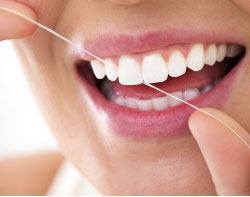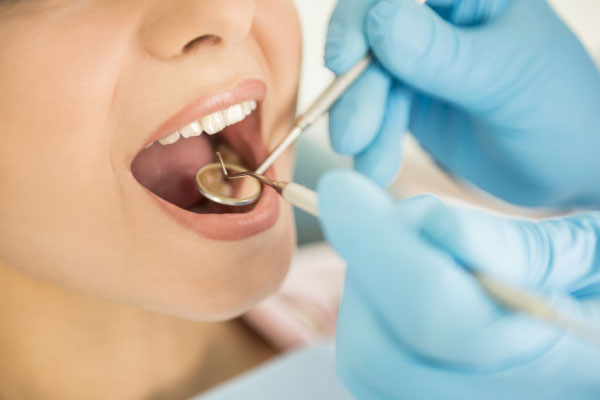Your pearly whites are companions for life – that’s enough reason to give them regular, loving care, which may not be so tender for their own good, writes Behnaz Sanjana.
 Our teeth may not be the very first feature that people notice, but they are definitely on the first impressions radar; reason enough to maintain a healthy smile. We’ve been warned about cavities since we first bit into candy, but Dr Komal Sharma, endodontist at Al Hilal Hospital, Muharraq, addresses common dental issues that you may be oblivious to.
Our teeth may not be the very first feature that people notice, but they are definitely on the first impressions radar; reason enough to maintain a healthy smile. We’ve been warned about cavities since we first bit into candy, but Dr Komal Sharma, endodontist at Al Hilal Hospital, Muharraq, addresses common dental issues that you may be oblivious to.
Gingivitis: “Your gums actually attach to the teeth at a lower point than the gum edges that you see. This forms a small space called a sulcus. Food can get trapped in this space and cause a gum infection or gingivitis,” says Dr Komal. She continues: “Plaque, a thin film of bacteria, constantly forms on the surface of your teeth. As plaque advances, it hardens and becomes tartar. When plaque extends below the gum line, infection can develop.”
Gingivitis is often caused by inadequate oral hygiene, but is reversible with professional treatment and good dental hygiene. Other causes of gingivitis include hormonal changes; diseases such as cancer, diabetes and HIV; certain medications; and smoking as well as heredity. Those who are genetically predisposed may be up to six times more likely to develop some form of gum disease.
Gingivitis causes the gums to become red, swollen and to bleed easily. There is usually little or no discomfort at this stage. Left unchecked, it can advance to periodontitis, where the inner layer of the gum and bone pull away from the teeth and form pockets, which collect debris and can become infected. “As the disease progresses, the pockets deepen and more gum tissue and bone are destroyed. When this happens, teeth are no longer anchored in place, they become loose and fall out. Gum disease is the leading cause of tooth loss in adults,” warns our expert.
Prevention of this problem lies in proper plaque control. Dr Komal advocates professional cleanings at least twice a year, daily brushing to eliminate plaque from the surfaces of the teeth that can be reached and flossing to get at food particles and plaque from in between the teeth and under the gum line. Antibacterial mouth rinses can help reduce plaque-causing bacteria.
Reducing stress, maintaining a healthy diet, avoiding clenching and grinding of teeth and not smoking also reduce the risks associated with gingivitis.
 Tooth Sensitivity: Often referred to as the ‘common cold of dentistry’, dentin hypersensitivity is highly prevalent among the global population. Those who know what it feels like wince at its very mention.
Tooth Sensitivity: Often referred to as the ‘common cold of dentistry’, dentin hypersensitivity is highly prevalent among the global population. Those who know what it feels like wince at its very mention.
“A layer of enamel protects healthy teeth. Under the gum line, a layer called cementum protects the tooth root. Underneath both the enamel and the cementum is dentin.
Dentin is less dense than enamel and cementum and contains microscopic hollow tubes. When dentin loses its protective covering of enamel or cementum, these tubules allow heat and cold or acidic or sticky foods to reach the nerves and cells inside the tooth,” says our expert, explaining the cruel sensation.
Dentin may also be exposed when gums recede due to forceful brushing, brushing with an abrasive toothpaste or gum disease. And, if you are contemplating getting your teeth whitened, think again. Dr Komal states that dental bleaching is a known cause of hypersensitivity, others include smoking, cracked teeth or grinding.
There is no universally accepted, gold-standard treatment which reliably relieves dental hypersensitivity in the long term and suggested treatments have varying degrees of efficacy when scientifically studied.
Generally, over-the-counter products are effective for mild to moderate hypersensitivity associated with several teeth. These include desensitising toothpastes or potassium salt mouthwashes and chewing gums. You may have to visit the dentist if you are experiencing localised, severe hypersensitivity associated with one or two teeth.
Halitosis: Bad breath, or halitosis, is the most common complaint reported to dental professionals. Who doesn’t know at least one person with a case of death breath? However, perpetuators can be blissfully unaware of the problem, unless they are directly alerted to it. This embarrassing issue may stem from oral or other physiological conditions, though most cases are of oral origin, maintains Dr Komal.
She says: “Bad breath can be caused by a variety of things, including diet and conditions such as diabetes, lactose intolerance or gum disease. Medications that cause a dry mouth can trigger bad breath and certain medications cause it as a side effect. The proper treatment depends on the cause.”
However, the prime causes of bad breath are related to adequate hygiene. Food particles that may remain in the mouth can rot and cause odours. Over time they promote the growth of bacteria, which can also stir up a stench, eventually leading to tooth decay and gum disease.
Foods with strong odours like onions and garlic, exotic spices, some cheeses, fish and acidic beverages, such as coffee, can cause bad breath. These foods may also cause belching, which can contribute to bad breath. Certain supplements, such as fish oil capsules, can also be a culprit.
“Bad breath can also be caused by decreased flow of saliva, which is a vital part of the digestive process and removes odour-causing particles in the mouth. This is called xerostomia, and may be caused by medications, breathing through the mouth or salivary gland problems,” says Dr Komal. Tobacco users also suffer less than fresh breath, as do diabetics and those suffering from periodontitis, liver or kidney disease or respiratory tract disorders.






































A very educative and a wonderfully written article. God bless Komal.
Very informative article for a comman man.
Comments are closed.